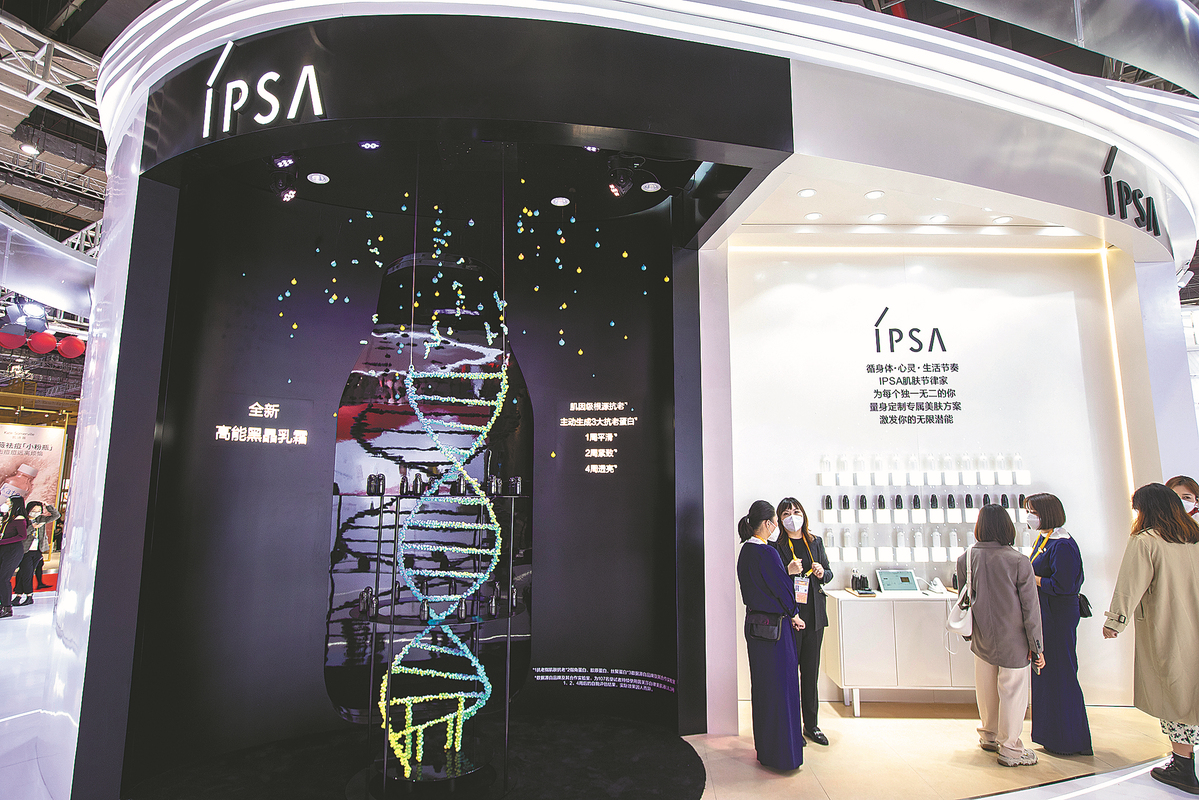International makeup companies get inspiration from Chinese aesthetics


More international cosmetics brands have embraced traditional Chinese culture and strengthened local research and development. The efforts are being made to attract more young Chinese consumers, who have become increasingly confident about national culture and shown personalized demand, industry experts said.
International brands have begun to regard the ancient Chinese calendar as a seasonal symbol of fashion, reflecting the revival of traditions. The calendar, incorporating elements of lunar and solar calendars, can divide the year into 24 periods, or jieqi.
Japanese skincare brand IPSA of the Shiseido Group cosmetics company produced a weather broadcast last year to announce qiufen — the fall equinox — when the sun is exactly above the equator. It promoted its products by publicizing what it called the need for moisturizing during fall's harsh weather.

Unlike many other kinds of marketing, efforts that integrate solar terms can reflect a more emotional aspect, such as nostalgia, elements of daily life and personal stories. Beauty brands prefer to market products with solar terms because it gives them a chance to release limited-edition products that fit with the ancient calendar in order to attract consumers with discounts and other promotional events.
In one such case, using lixia — the beginning of summer — a solar term that indicates that temperatures are expected to rise, many brands advertise skincare tips and promote the use of their products, industry observers said.
"It's a good phenomenon for international cosmetics brands to market their products by integrating Chinese culture. It shows that global brands are aware of the competitiveness of local brands," said Cheng Guangcan, an analyst at the LeadLeo Research Institute, a market research provider.
"In the past few years, Chinese consumers' preferences for cosmetics have been changing. Before, international brands almost occupied a monopoly position in the domestic market. With the emergence of more domestic brands and the growing cultural confidence of Chinese consumers, domestic brands have started to account for a greater market share," Cheng said.
Still, global brands should maintain their original style and image when they pursue localization strategies to retain their recognition by Chinese consumers, she added.
International cosmetics brands have also been integrating elements of traditional Chinese festivals to market their products. During this year's Spring Festival, many brands collaborated with renowned artists and combined traditional Chinese arts to introduce limited editions of products for the Year of the Rabbit.
High-end skincare brand Fresh worked with domestic paper-cut artist Qiu Jia to use paper-cut designs in the packaging of its products. Shiseido also worked with paper-cut artist Chen Fenwan to launch limited-edition packaging for Spring Festival.
US skincare group Estee Lauder opened its China Innovation Labs in Shanghai in December. The company said it is a world-class R&D center to help its brand develop more beauty products that cater to young Chinese customers.
Estee Lauder said those customers have become increasingly open-minded and sophisticated as they pursue novel and distinctive products. The company said it will continue to strengthen its personalized exploration and may acquire more brands that young people like.
"We will achieve the goal of serving Chinese and overseas consumers with R&D in China and develop more brands that fit with the demand of young Chinese consumers," said Joy Fan, president of Estee Lauder China.
"We are confident about the growth potential in China in the long term and will continue to increase investment in the Hainan Free Trade Port. We will also further expand marketing both online and through brick-and-mortar stores," she said.
Young Chinese consumers, especially Generation Z consumers — those born in the mid- and late-1990s and into the 2000s — are playing an increasingly important role in the domestic market for cosmetics.
"Young Chinese consumers prefer products with beautiful packaging. Brands can be more innovative in the design of their packaging to create different visual experiences and win the favor of young customers," said Cheng of the LeadLeo institute.




































